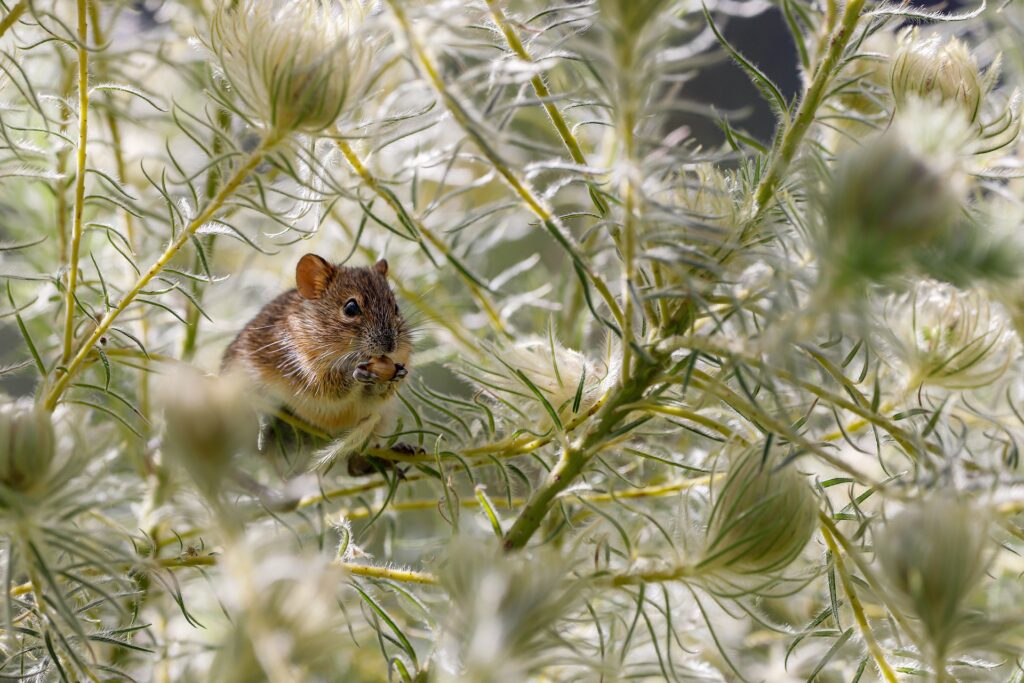When you find holes in your clothing, it’s easy to blame all moths for your wardrobe misfortune. However, before you start pointing fingers at every moth you see, you should know that adult moths don’t actually eat clothing. In fact, the majority of adult moths don’t eat anything at all. Some moths don’t even have mouths! When it comes to your clothes, only one species eats clothing: the clothes moth. What’s more, it’s not even the adult clothes moth that is responsible for damaging your belongings, it’s the clothes moth larvae.
What do Clothes Moths Look Like?
While clothes moths may look similar to common household moths, such as the pantry moth, their food preferences differ. Instead of grains, flour, pasta, and cereal, clothes moths feed on animal fibers containing keratin. This includes wool, fur, silk, feathers, and leather. For the most part, clothes moths do not feed on cotton or synthetic fabrics unless they are blended with animal fibers or are heavily soiled.
One thing that is important to note is that the damage caused by clothes moths is similar to that of the carpet beetle. Since carpet beetles feed on similar materials as clothes moths, it is common to lay the blame on clothes moths when in actuality; you could be dealing with carpet beetles. As a result, proper identification is key.
Identifying clothes moths can be difficult, especially given their small size. For the most part, there are two types of clothes moths that cause problems for homeowners – the webbing clothes moth and the casemaking clothes moth. In addition to a similar size, the webbing clothes moth and casemaking clothes moth look similar in appearance as well. The major difference is that a webbing clothes moth is golden, tan in color and the casemaking clothes moth has wings with dark specks on it.
Adults clothes moths lay between 40-50 tiny eggs on susceptible materials. These eggs will then hatch into fabric-eating larvae. Clothes moth larvae look like small creamy-white caterpillars. As the larvae develop and graze along the clothing surface, threadbare spots will occur.
Where do Clothes Moths Come From?
Unlike the moths you see fluttering towards a light source, clothes moths actually hate the light. Instead, clothes moths prefer dark secluded areas. Clothes moths can get into your home by simply flying through an open door or window. Given their small size, it is easy for clothes moths to get into belongings without you noticing them. If you’re a fan of consignment stores and thrift shops, clothes moths may get into your home by way of second-hand clothing or furniture. Furthermore, clothing and furniture kept in storage, sheds, or garages are susceptible to clothes moths as well. However, no matter how they get into your home, there are a number of ways to prevent clothes moths and if you do have them, get rid of them.
How to Get Rid of Clothes Moths
To determine whether you have a clothes moth infestation, you must first thoroughly inspect any susceptible items. This could be anything from a wool scarf, an old rug, a second-hand sofa, or a taxidermy stuffed animal. If you find clothes moths in your belongings, you should take the following steps:
- Dispose of items that have been destroyed by clothes moths, or are past the point of repair.
- Thoroughly clean your clothes by taking them to a dry cleaner or washing them in hot water.
- Deep clean and vacuum carpeted areas, rugs and closets thoroughly. Be sure to dispose of the vacuum bag immediately.
- Freeze any items you cannot wash or dry clean for 72 hours.
- Call a pest control expert.
While it’s established that clothes moths can cause holes in clothes, this nuisance extends to other items in your home as well. Wool sweaters, silk dresses, leather jackets, and even fur throws can fall victim to these hungry larvae. Not all moths eat clothes, but those that do can create significant damage. Preventing moth holes in clothes and other materials involves keeping your wardrobe and storage areas clean and using moth deterrents like cedar wood or lavender sachets. Remember, moths are less attracted to well-maintained and frequently used items, so regular use and proper maintenance of your clothes can also help keep these pests at bay. If you’re dealing with a persistent problem, moth proofing with professional-grade products or consulting a pest control expert can provide long-term solutions to protect your valuable garments and fabrics.
Unfortunately, when you are trying to get rid of clothes moths yourself, it’s hard to be successful on the first try. If you find yourself with a clothes moth situation, your best bet is to call a pest control expert such as Aptive Environmental. An Aptive pest specialist will be able to identify vulnerable materials and problem areas in your home, and can determine the most effective treatment option based on your needs.
Start protecting your home by calling your local Aptive Environmental branch today.









